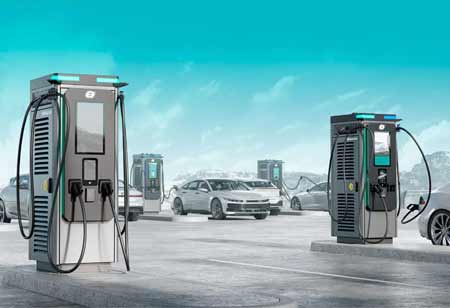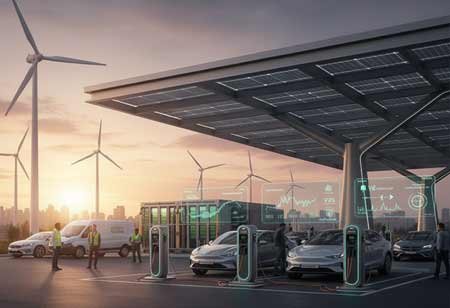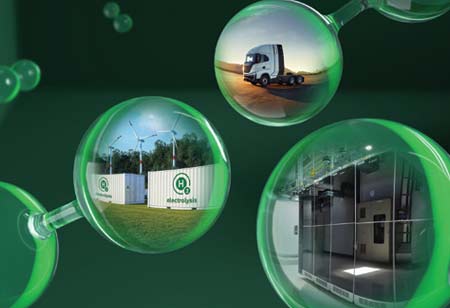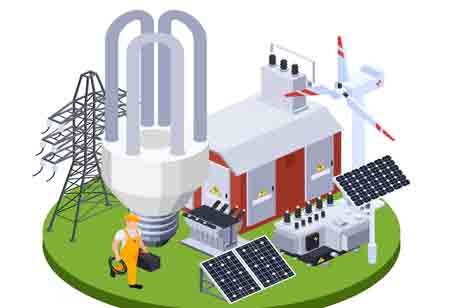CLOSE
Specials
I agree We use cookies on this website to enhance your user experience. By clicking any link on this page you are giving your consent for us to set cookies. More info
Be first to read the latest tech news, Industry Leader's Insights, and CIO interviews of medium and large enterprises exclusively from Energy Tech Review
Thank you for Subscribing
The New Fuel Station: Rethinking UX in EV Charging
The automotive industry is transforming charging stations into user-friendly hubs with intuitive design, smart technology, and amenities, enhancing the EV ownership experience for modern consumers.

By
Energy Tech Review | Friday, December 05, 2025
Stay ahead of the industry with exclusive feature stories on the top companies, expert insights and the latest news delivered straight to your inbox. Subscribe today.
As the automotive industry accelerates toward electrification, the concept of the fuel station is being fundamentally reimagined—evolving from a purely functional refueling stop into an innovative hub designed for the electric era. This shift is not merely a replacement of pumps with chargers, but a transformation of the entire user experience, with convenience, efficiency, and digital integration at the forefront. While early adopters of electric vehicles tolerated fragmented charging networks, today’s mainstream consumers expect seamless, intuitive, and reliable solutions that are as simple as their smartphones or smart homes. In response, the industry is reinventing charging infrastructure, rethinking every detail to deliver a frictionless, positive, and even enjoyable journey that positions the driver at the center of a new, connected ecosystem.
The Physical and Digital Interface
The transformation of charging stations reflects a shift from utilitarian, isolated points to thoughtfully designed, user-friendly hubs that prioritize comfort, accessibility, and intuitive interaction. Modern charging environments now feature architectural canopies for weather protection, vibrant LED lighting for safety and ambiance, and professional landscaping to soften the technological edge. Hardware has also advanced, with ergonomic designs, lighter and more flexible cables, and standardized plug types that enhance ease of use and reliability. Accessibility is central to this new philosophy, incorporating wheelchair-friendly layouts, lower screen heights, and tactile indicators to ensure inclusivity. Additionally, clear visual cues, such as color-coded lighting strips indicating charger status, simplify user experience and reduce frustration, making charging not just a functional task but a welcoming and accessible experience for all drivers.
Beyond the physical hardware, the digital interface is where the user experience truly comes to life. Sleek, responsive touchscreens are replacing the clunky and often confusing interfaces of early charging networks, and more importantly, a powerful suite of integrated mobile applications. These apps are becoming the central command center for the EV driver, offering a wealth of features that streamline the entire process. A journey can now be planned where the vehicle's native navigation system not only directs you to a charging station but also provides real-time data on its availability, the specific connector types it offers, and its charging speed. In many systems, a driver can even reserve a spot in advance, guaranteeing a seamless arrival. Initiating a session is as simple as a single tap on a smartphone screen or a quick scan of a QR code, bypassing the need for multiple membership cards or fobs.
The Rise of Smart Ecosystems
The ultimate goal is to transform charging from a simple transaction into a seamless, intelligent background process that demands minimal effort from the driver. The industry is rapidly moving towards a more unified and user-friendly payment landscape. The proliferation of "Plug and Charge" technology, an ISO standard that enables direct and secure communication between the vehicle and charger to handle authentication and billing automatically, represents the pinnacle of this effortless experience. The driver simply plugs in, and the system takes care of the rest. This removes the final point of friction, making the process of "refueling" as autonomous and straightforward as plugging in a consumer electronic device.
This seamlessness is powered by intelligent software platforms that manage the entire charging network. Smart charging capabilities are becoming standard, enabling a relationship between the vehicle, the charger, and the electrical grid. This allows for features like scheduled charging, where a driver can plug in their vehicle but delay the start of the session to take advantage of lower off-peak electricity rates overnight. On a larger scale, these platforms can manage the energy flow to dozens of vehicles at a single hub, ensuring that the local grid is not overwhelmed while optimizing charging speeds for every user based on their stated departure time and battery needs. For the driver, this translates to a more transparent, controllable, and cost-effective experience. This intelligent backend also works proactively to ensure reliability, utilizing predictive analytics to monitor hardware health and schedule preventive maintenance, thereby maximizing uptime and user confidence.
The Charging Hub as a Destination: Redefining 'Dwell Time'
The most significant shift in thinking is the redefinition of the charging location itself. Where a traditional five-minute fuel stop was a brief, in-and-out necessity, the 20- to 40-minute "dwell time" required for a significant DC fast charge presents a new opportunity. Forward-thinking network operators are transforming this waiting period from a necessary delay into a valuable and productive interlude. The charging hub is evolving into a multi-purpose destination.
This goes far beyond a simple vending machine. These locations are increasingly integrating high-quality amenities that cater to the modern driver's lifestyle. Premium coffee shops, healthy fast-casual restaurants, and clean, modern restroom facilities are becoming baseline expectations. Leading-edge hubs are incorporating co-working spaces with high-speed Wi-Fi, quiet lounge areas for relaxation, and even small fitness rooms. The experience is further enhanced by convenience-oriented services like secure package pickup lockers, on-site car washes, and dedicated play areas for children. By providing these amenities, the charging station becomes a destination in its own right, a place where a driver can productively work, relax, or run errands while their vehicle recharges. This holistic approach recognizes that the driver's time is valuable and seeks to enhance it, not merely consume it.
The new fuel station is a testament to the power of human-centered design. By focusing meticulously on the entire driver journey—from digital planning and seamless arrival to effortless payment and value-added amenities—the industry is crafting an ecosystem that is not just functional but genuinely pleasant to use. It marks a shift from a purely transactional model to a relationship-based one, where technology anticipates driver needs and provides elegant solutions. This profound evolution is not just about making EV ownership more convenient; it's about making it an inherently superior experience, accelerating the transition to a future where electric mobility is the natural, effortless, and preferred choice for everyone.

Copyright © 2025 Energy Tech Review. All rights reserved






